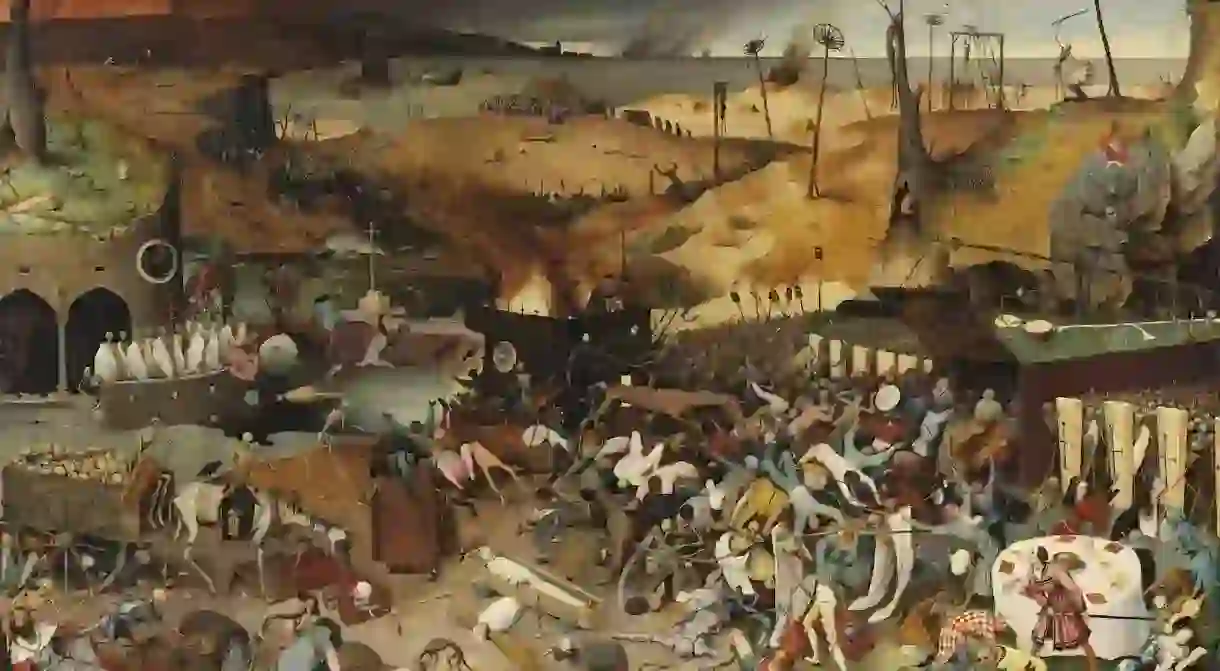See This Recently Restored Pieter Bruegel the Elder Painting at Museo del Prado

After extensive restoration, The Triumph of Death (1562-1563) – only one of two Pieter Bruegel the Elder’s paintings in Spain – goes back on public view at Museo del Prado in Madrid.
The Bosch of his time, Bruegel was an exceptionally skilled draughtsman and printmaker. He didn’t actually paint until quite late in his life and the majority of his best-known paintings were made in the last decade of his life.

The Triumph of Death dates from 1562, just seven years before Bruegel died. In it he focuses solely – if the title didn’t give it away – on death, but more distinctly, the obsession and terror that existed and consumed people in the 14th century. Death is a reality to all of us, but here, Bruegel captures the overwhelming power and presence it had in human life.
Bruegel alludes to the idea that in death we are equal, yet if you live a morally good life, then you could reap the rewards in the afterlife. He looked to the traditions of the time and took inspiration from scenes Bosch painted to create a landscape of bizarre events that were heavily steeped in a morbid medieval preoccupation.
As with Bosch, Bruegel employed a composition where you would be constantly drawn around the canvas as opposed to focusing on one aspect. He tells multiple stories within the one landscape. Women attempt to flee a dining table as skeletal soldiers of death grab them. Hoards of people are marched into a giant coffin. A man takes his sword in the hope he can defeat death. A cart filled with skulls is drawn by a weary-looking horse. A man hiding in the stump of a tree has been killed and in the distance plumes of smoke billow into the sky as cities burn. These are but a few of the scenes interwoven throughout this intense painting.
About a year ago the Museo del Prado decided they needed to restore the painting. Varnish, from previous restorations, had yellowed over the years, distorting Bruegel’s originally bright palette with a murky veil, and the wooden panels had moved and split the paint surface. It was a huge undertaking due to the thin layer of original pigment, not to mention it is such an important work in the history of art.
As the painting goes back on public view at the Museo del Prado, we take a look at this phenomenal work and how the restoration has returned the painting to its former glory.









The Triumph of Death by Pieter Bruegel the Elder is on view in Room 55A at Museo del Prado, Paseo del Prado, s/n, 28014 Madrid.
Want to see more art around the world? Here are the art museums to visit right now.













